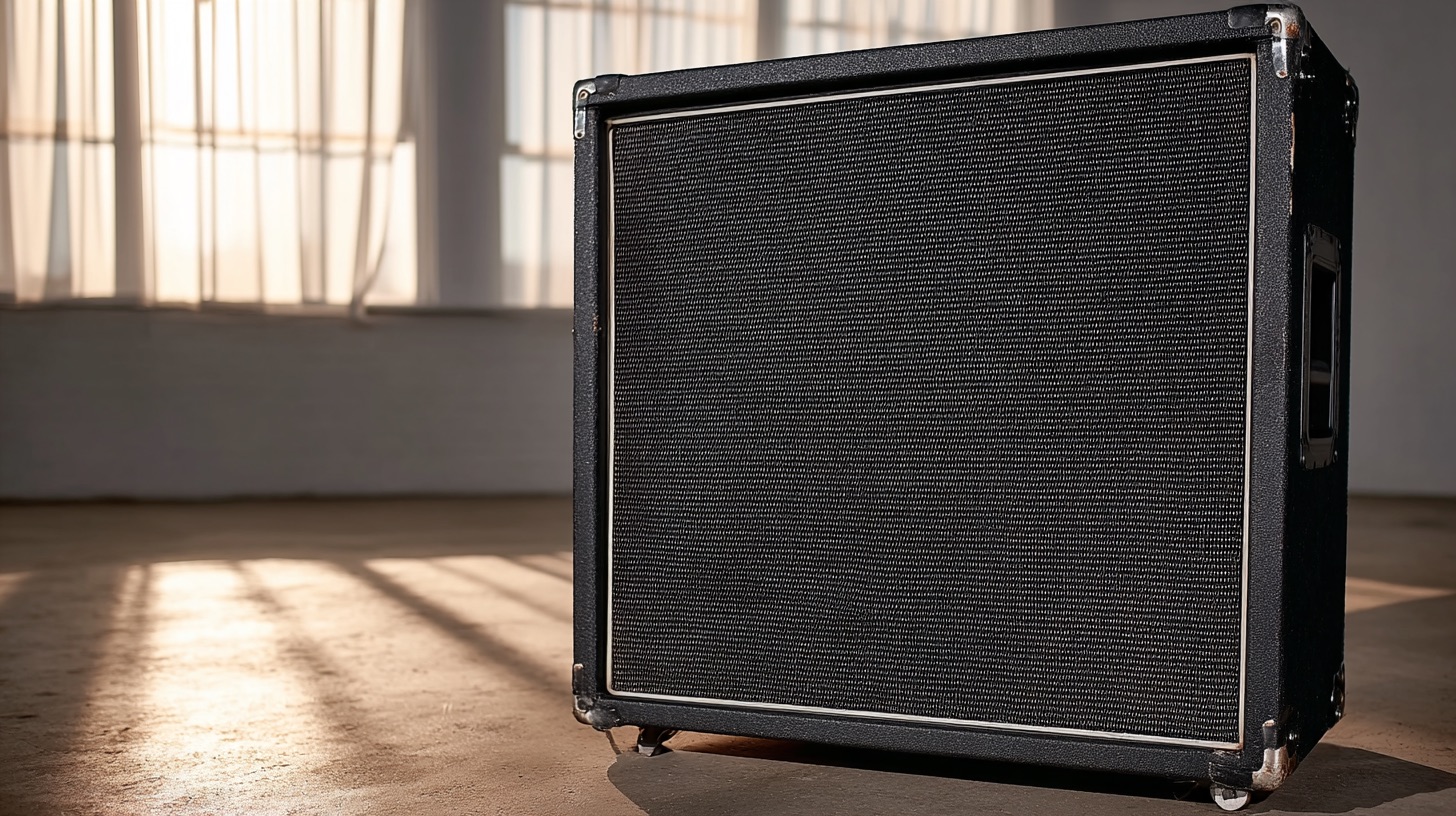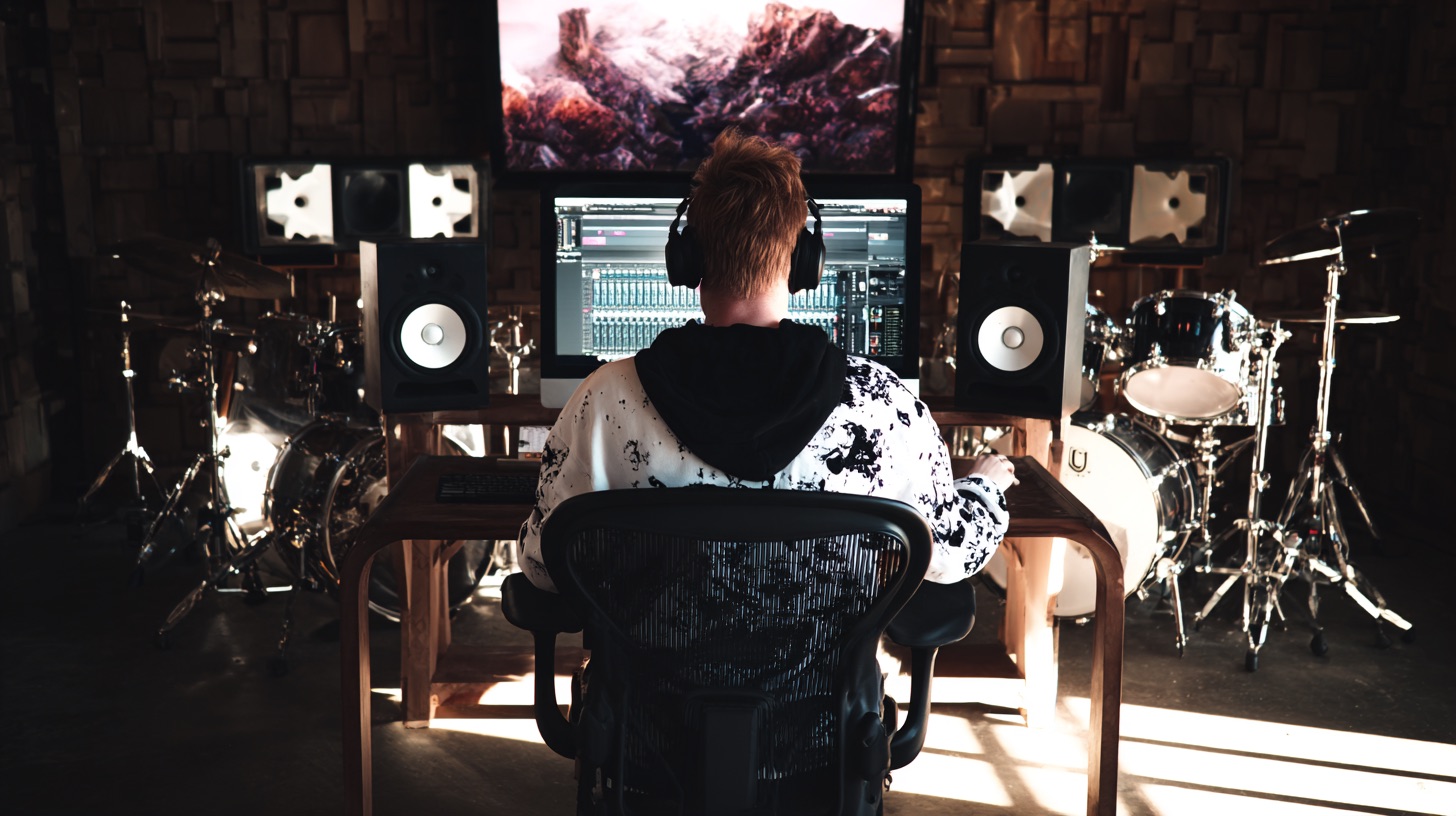
Editing August Burns Red Guitars: The Slower Tracking Method for Tighter Riffs
Nail The Mix Staff
Let’s be real. Editing modern metal guitars to be perfectly tight with the drums can be a total grind. You get a killer performance, but when you chop it up and snap it to the grid, you’re left with tiny, ugly gaps every time the guitarist rushed a note. Then you’re stuck trying to fix it with time-stretching that sounds grainy or crossfades that create weird sonic bumps.
What if there was a better way? A way to get surgically tight guitars that sound more natural, all while making the recording session easier for the guitarist?
During their Nail The Mix session, producers Carson Slovak and Grant McFarland broke down a counter-intuitive but brilliant technique they used to track the guitars for August Burns Red’s album Coordinates. The core idea? Record the guitars slightly slower than the song’s final tempo.
The Core Concept: Tracking Slower for Cleaner Edits
The basic principle is brilliantly simple. If a song’s tempo is 190 BPM, you might track the rhythm guitars at 184 BPM. This small difference builds in extra “audio data” between each note.
Why Does This Work?
Think about it: when a guitarist rushes a riff that was tracked at the final tempo, moving a note to the grid means you have to pull it forward, creating a gap of silence where there was once audio. You have to fill that gap, and that’s where you get those nasty editing artifacts.
By tracking a bit slower, you build yourself a safety net. When you slide a note forward onto the grid during editing, you’re simply trimming the natural tail end of the previous note. There’s no gap to fill. This allows you to avoid using time compression/expansion or other tools that can degrade the audio, leading to a punchier, more natural-sounding edit.
As a bonus, Carson noted that many musicians have a natural tendency to speed up when recording solo to a click. Sometimes, tracking a few BPM slower results in a performance that, after the player’s natural rush, lands almost perfectly at the target tempo with minimal editing needed.
Performer Comfort = Better Takes
This method also has a huge psychological benefit for the musician. Pushing to play a highly technical part at the absolute peak of their ability can introduce tension and lead to sloppier takes. By dialling the tempo back just 5-10 BPM, the guitarist can relax. This small change is enough to ease the physical strain without altering the feel of the riff, often resulting in a much cleaner, more precise, and powerful performance from the get-go, which ultimately leads to better takes.
The Editing Workflow: From Raw Take to Grid-Locked
Once you have the slower take, the editing process is straightforward but requires attention to detail. This is where you turn that slightly relaxed performance into a machine-gun-tight riff.
Step 1: Visual Editing with a Clean DI
Having a clean, clear DI signal is crucial because you’ll be editing visually. For the August Burns Red sessions, the DI wasn’t 100% sterile; it was run through an API preamp, which added a bit of gain and harmonic color. This actually helps make the transients pop even more on the waveform, giving you a crystal-clear visual guide for each pick attack.
Using your DAW’s Tab-to-Transient function, jump to the start of each guitar note on the DI track. Separate the region there and snap the beginning of the new clip directly to the grid line it’s supposed to hit. You repeat this for every note in the riff, essentially quantizing the audio clips.
Step 2: The Nudge Trick to Restore Pick Attack
Here’s the pro move that makes this technique sound so seamless. When you align a DI’s transient directly to the grid, you often cut off the very first milliseconds of the sound—the actual “click” of the pick hitting the string. This happens just before the main body of the note’s waveform blooms.
To reintroduce that crucial attack and make the edit sound invisible, Carson uses a two-step nudge trick:
- Nudge the Audio: First, select all your edited clips. Use your DAW’s function to nudge the contents of the clips (the audio itself) to the left. In Pro Tools, this is Control + Minus. Carson used a nudge value of around 600 samples for this. This slides the audio within each clip backward, uncovering the pick attack that was previously cut off.
- Nudge the Clip: Next, with the clips still selected, use the regular nudge function (just the Minus key in Pro Tools) to move the entire clip containers back to the right by the same value.
This effectively moves your edit point slightly earlier, preserving the natural pick attack while keeping the main transient of the note locked perfectly to the grid. To finish it off, apply a quick 5ms batch crossfade to all your edits to ensure there are no clicks or pops.
When to Use It (And When Not to)
This technique is a powerhouse, but it’s not a one-size-fits-all solution. Knowing where to apply it is key.
Where It Shines
- Tight Rhythm Guitars: For percussive, grid-based modern metal rhythms, this method is king. It’s tailor-made for getting that surgically precise sound.
- Technical Leads: If a lead part is more about precision and speed than expressive bends, this can work wonders.
- Drums: The same concept applies fantastically to drums, allowing you to tighten up a performance with incredibly natural-sounding results.
Where to Be Cautious
- Expressive Solos: For leads with a lot of vibrato, feel, and human timing, you’re better off with the traditional method of comping together the best parts of several takes.
- Clean Guitars: This technique is very difficult to pull off with clean tones. The long, sustained notes and ringing decays make edits extremely obvious. Moving a note can unnaturally cut off the tail of the previous one, creating a very audible glitch.
- Drums (with a caveat): While it works for drums, you can’t slow the tempo down too much. If you do, the natural decay of cymbals gets cut short when you move a kick or snare hit forward. This creates an audible “dip” in the cymbal wash that sounds like a bad edit.
Putting It Into Practice
This slower-tracking method is a game-changer for achieving tight, professional-sounding metal productions without the usual editing headaches. It leads to cleaner edits, avoids sonic artifacts, and results in better takes by keeping the performer comfortable.
August Burns Red on Nail The Mix
Carson Slovak & Grant McFarland mixes "Coordinates"
Get the Session
This kind of deep-dive into a specific production problem is exactly what we do every month at Nail The Mix. Watching a pro like Carson Slovak actually demonstrate these techniques on the real August Burns Red multitracks gives you an understanding that an article alone just can’t provide. You see how these editing A-Ha moments fit into the larger picture of crafting a mix, from dialing in the initial guitar tone with the right EQ strategies to gluing it all together with powerful bus compression.
If you’re ready to move beyond presets and learn how records really get made, check out our free guide, Unlock Your Sound, and see how you can get access to the full August Burns Red multitracks and Carson’s complete mixing masterclass.
Get a new set of multi-tracks every month from a world-class artist, a livestream with the producer who mixed it, 100+ tutorials, our exclusive plugins and more
Get Started for $1






